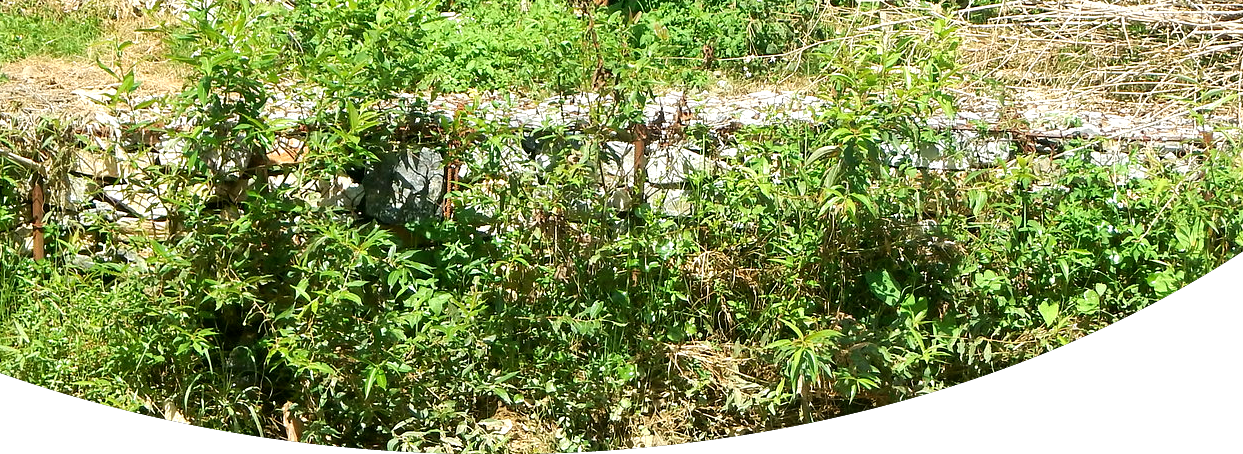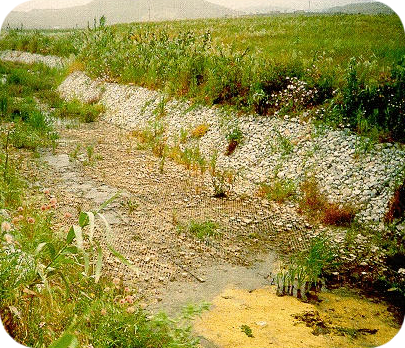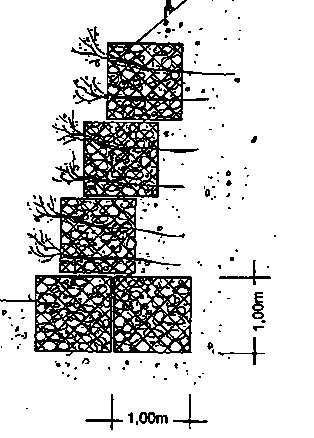Application: Bridge abutments, canals, culverts and drains, dykes, embankments, floodgates, stormwater outfall
Description: A gabion is a rectangular container fabricated from a triple twisted, hexagonal mesh of heavily galvanized steel wire. Gabions are normally supplied folded flat and bundled together for easy handling. They are then filled with small to medium size rock. The vegetation layer of the structure is a geotextile with live cut branches placed in horizontal layers between the rock-filled gabion baskets which serves to hold soil and or rocky backfill in place until roots from live cuttings grow enough to serve that purpose. The gabions are laced together and installed at the base of a bank to form a structural toe or sidewall. Gabions are used to stop undercutting and/or scouring at the base of steep slopes.
Contribution to climate resilience: Gabions reduce erosion caused by floods or rainfall by stabilizing the base of steep slopes. Because they can be repaired using local labour and locally available materials, they can be restored in a quicker timeframe than traditional civil engineering works, making them more adaptable to climate events and increasing the resilience of the areas they serve.
Supplementary sources of information:
http://riparianhabitatrestoration.ca/575/livesoftgabion.htm
http://citeseerx.ist.psu.edu/viewdoc/download?doi=10.1.1.545.2505&rep=rep1&type=pdf
http://ponce.sdsu.edu/alamar_hydroecology_final_report_figure_03b.jpg
http://www.fao.org/3/a-y5576e/x0622e0s.htm
Background image credit: ICEM
This resilience-building measure is sourced from the Water Resource Adaptation Guide (2019) published by the National Council for Sustainable Development at the Ministry of Environment in Cambodia. The full Guide is available to download at URL https://ncsd.moe.gov.kh/sites/default/files/2019-10/Water%20Resources%20Adaptation%20Guide_March%202019_En.pdf


